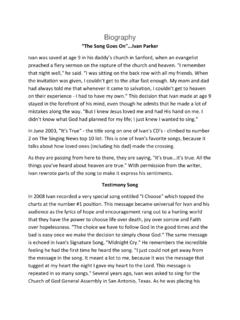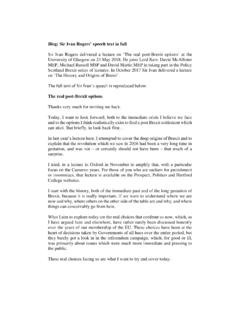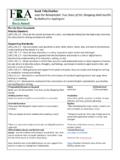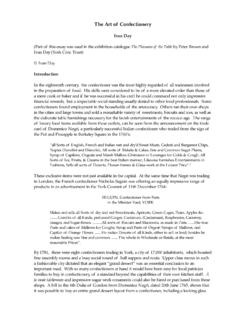Transcription of TUNING YOUR WEBER CARBURETORS - The Car Nut
1 TUNING your WEBER CARBURETORS Ivan Ruiz It is not too uncommon to have your pre-mid-1980 s Maserati GT car backfiring either through the exhaust or through the CARBURETORS . There are several tricks the home mechanic can use to tune WEBER CARBURETORS without expensive equipment. Keep in mind these tricks will not work if you are attempting to reduce exhaust emissions. For that task you will need an exhaust analyzer that can test for all the emissions requirements where you live. If all you are trying to do is to get your car running a little better, read on! The following is for cars fitted with WEBER downdraft 42 DCNF CARBURETORS but some techniques also apply to the side draft DCOE inline 6 cylinder engines.
2 You cannot get an engine properly tuned unless it is mechanically sound. The engine needs to have consistent compression across all cylinders. Do an engine compression test and verify is healthy before continuing. A lot of engine problems are caused by the ignition system, so verify the spark plugs are clean, ignition wires in good condition, proper timing, etc. before messing around with the CARBURETORS . Okay, now it s time to take a look at those Webers. First start the fuel pump for a few seconds to fill up the carburetor bowls. Remove the air cleaner so you can look inside the carburetor throat. Manually open the throttle and you should see a squirt of gasoline from each of the accelerator pump nozzles.
3 Make a note of any nozzle not squirting. Next start the car and bring to an idle. Again look into the throats to inspect the accelerator pump nozzles and see if any are leaking. It s not unusual to find several nozzles dripping fuel while at idle. To fix this problem, the accelerator pump s diaphragms have to be replaced. Don t panic this is an easy and rather inexpensive repair. The pumps are located on the left hand side of the carburetor, held in place by four slot head screws. Remove the screws and out will come the diaphragm and a spring. Make sure not to lose this spring as it will be reused. New diaphragms can be bought from a WEBER supplier such as Pierce Manifolds (408-842-6667).
4 It is best to replace all your diaphragms even if only one carburetor was leaking. Once the diaphragms are replaced and there is little else in a WEBER CARBURETORS that wears it is time to adjust. WEBER CARBURETORS are infinitely adjustable by replacing jets but my suggestion is to leave the jets at the factory specifications unless you really know what you are doing (and therefore would not be reading this article!). This leaves us with only two adjustments: the float height and the idle mixture. Instructions for checking the float height are included in the owner s manual but they seldom seem to be a problem. To check the idle mixture I like to use a tool common to English car mechanics a Gunson ColorTune.
5 This is essentially a see through spark plug that lets you observe what is happening inside the combustion chamber while the car is running. I am surprised by how many people don t know of this tool and am amazed by its simplicity. You can buy ColorTune at many British parts specialists, such as Moss Motors .. or just check eBay. Expect to pay about $60 for one. Start by bringing the car to normal operating temperature. Stop the engine, remove a spark plug, and insert the ColorTune tool. Start the engine and observe the color of the combustion gases. Turning the idle mixture screw in (clockwise) should lean the mixture and make the gases turn white while turning the idle screw out should turn the gases bright yellow.
6 Find the setting where the gases are burning a deep blue. Now you have finished the carburetor adjustments for this cylinder and are ready to do the rest. At times, you will find the it is impossible to achieve a nice blue burn. This is an indication that something else is wrong with either the carburetor (dirt, etc.), ignition, or something really bad (valves, rings, etc.). If the engine has been popping, you will be able to pinpoint the faulty cylinder and see the popping through the ColorTune. Adjusting the idle mixture, you should be able to get a consistent burn and thus eliminate the popping. If you determine the carburetor needs to be dismantled and cleaned, go ahead.
7 The gasket kit for the 42 DCNF is very inexpensive. However note that Webers have many small parts which all go back together rather easily. It is hard to mess them up unless you happen to loose a jet or two! Do one carburetor at a time so as to avoid this time consuming mistake.








